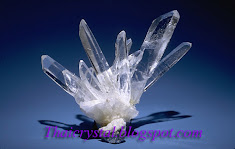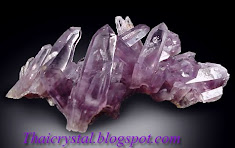Synthetic and imitation rubies
In 1837 Gaudin made the first synthetic rubies by fusing potash alum at a high temperature with a little chromium as a pigment. In 1847 Ebelmen made white sapphire by fusing alumina in boric acid. In 1877 Frenic and Freil made crystal corundum from which small stones could be cut. Frimy and Auguste Verneuil manufactured artificial ruby by fusing BaF2 and Al2O3 with a little Chromium at red heat. In 1903 Verneuil announced he could produce synthetic rubies on a commercial scale using this flame fusion process.
Other processes in which synthetic rubies can be produced are through the Pulling process, flux process, and the hydrothermal process. Most synthetic rubies originate from flame fusion, due to the low costs involved. Synthetic rubies may have no imperfections visible to the naked eye but magnification may reveal curves, striae and gas bubbles. The fewer the number and the less obvious the imperfections, the more valuable the ruby is; unless there are no imperfections (i.e., a "perfect" ruby), in which case it will be suspected of being artificial. Dopants are added to some manufactured rubies so they can be identified as synthetic, but most need gemmological testing to determine their origin.
Synthetic rubies have technological uses as well as gemological ones. Rods of synthetic ruby are used to make ruby lasers and masers. The first working laser was made by Theodore H. Maiman in 1960 at Hughes Research Laboratories in Malibu, California, beating several research teams including those of Charles H. Townes at Columbia University, Arthur Schawlow at Bell Labs, and Gould at a company called TRG (Technical Research Group). Maiman used a solid-state light-pumped synthetic ruby to produce red laser light at a wavelength of 694 nanometers (nm). Ruby lasers are still in use. Rubies can also be used in applications where high hardness is required such as material for scanning probe tips in a coordinate measuring machine.
Imitation rubies are also marketed. Red spinels, red garnets, and colored glass have been falsely claimed to be rubies. Imitations go back to Roman times and already in the 17th century techniques were developed to color foil red—by burning scarlet wool in the bottom part of the furnace—which was then placed under the imitation stone. Trade terms such as balas ruby for red spinel and rubellite for red tourmaline can mislead unsuspecting buyers. Such terms are therefore discouraged from use by many gemological associations such as the Laboratory Manual Harmonisation Committee (LMHC).

Custom Search

















































